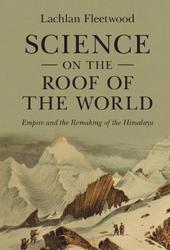
|
Science on the Roof of the World: Empire and the Remaking of the Himalaya
Hardback
Main Details
| Title |
Science on the Roof of the World: Empire and the Remaking of the Himalaya
|
| Authors and Contributors |
By (author) Lachlan Fleetwood
|
| Series | Science in History |
|---|
| Physical Properties |
| Format:Hardback | | Pages:294 | | Dimensions(mm): Height 235,Width 158 |
|
| Category/Genre | Asian and Middle Eastern history
Historical geography
History of science |
|---|
| ISBN/Barcode |
9781009123112
|
| Classifications | Dewey:508.5496 |
|---|
| Audience | |
|---|
| Illustrations |
Worked examples or Exercises
|
|
Publishing Details |
| Publisher |
Cambridge University Press
|
| Imprint |
Cambridge University Press
|
| Publication Date |
12 May 2022 |
| Publication Country |
United Kingdom
|
Description
When, how, and why did the Himalaya become the highest mountains in the world? In 1800, Chimborazo in South America was believed to be the world's highest mountain, only succeeded by Mount Everest in 1856. Science on the Roof of the World tells the story of this shift, and the scientific, imaginative, and political remaking needed to fit the Himalaya into a new global scientific and environmental order. Lachlan Fleetwood traces untold stories of scientific measurement and collecting, indigenous labour and expertise, and frontier-making to provide the first comprehensive account of the East India Company's imperial entanglements with the Himalaya. To make the Himalaya knowable and globally comparable, he demonstrates that it was necessary to erase both dependence on indigenous networks and scientific uncertainties, offering an innovative way of understanding science's global history, and showing how geographical features like mountains can serve as scales for new histories of empire.
Author Biography
Lachlan Fleetwood is a research fellow at University College Dublin.
Reviews'This book outlines the ways in which the imaginative geography of the Himalayas was constituted by western scientific knowledge, indigenous cosmologies and labour in the nineteenth century contributing to a global science of mountains. Here East India Company surveyors and naturalists jostle with Bhotiya and Tatar mountain guides, their multiple narratives framed through an interdisciplinary lens of botany, biogeography, glaciology, and anthropology. This is environmental history at its best.' Vinita Damodaran, University of Sussex
|